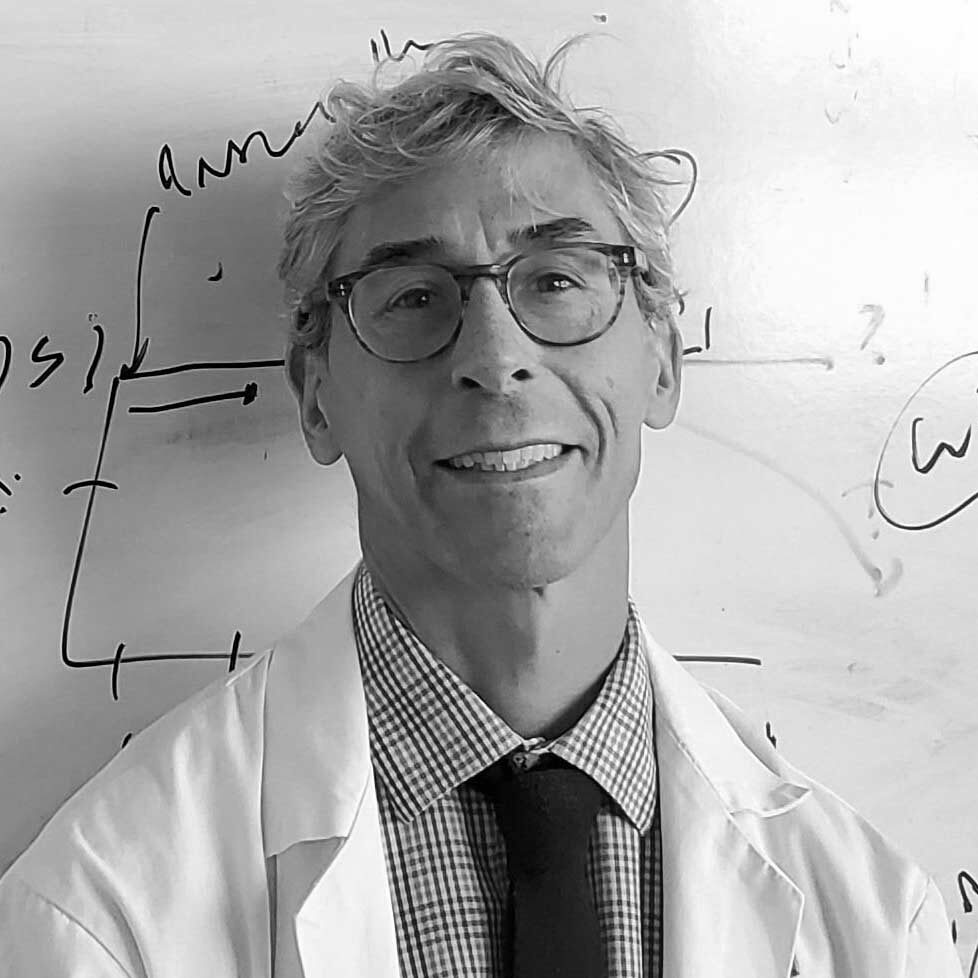
In 2006 Dr. Garza received a Research Fellowship from the DF for his study in “Isolation and Characterization of Human Skin Stem Cells.” The following year he received a Career Development Award for research in ‘Heterogeneous Cell Population within the Human Hair Follicle Stem Cell Compartment” and in 2009 a Research Grant looking at “Prostaglandins in Normal Hair Growth and Alopecia.”
We recently sat down with Dr. Garza to discuss his career and the impact DF support made for him and the specialty.
The Necessity of Having Time to Create and How Grants Make It Possible
DF: Good morning, Dr. Garza. Nice to meet you virtually.
Dr. Garza: Likewise!
DF: Can you tell us about how your relationship with the Dermatology Foundation began?
Dr. Garza: I had finished my dermatology residency and wanted to do a career in investigative dermatology on research as a physician-scientist. I started a postdoctoral fellowship, and several of my colleague postdoctoral fellows were physician-scientists like me who had just received grants from the Dermatology Foundation.
“I applied for a dermatology investigative fellowship, and it was awarded. It was one of my first grants, and it was so important and helpful.”
So, I applied for a dermatology investigative fellowship, and it was awarded. It was one of my first grants, and it was so important and helpful. It’s a very delicate process launching a career in academic dermatology. There are a lot of pitfalls, and it’s quite challenging. It takes a village; it needs a lot of support.
And that support best comes from your academic inner family, and that is the Dermatology Foundation.
After that, I received a career development award, and then I even was awarded a research grant.
DF: What comes after that?
Dr. Garza: Now I’m in their Leadership Society, and excited to have the opportunity to give back and share the benefits I received.
DF: That seems to be a theme among the dermatologists we’ve spoken with—the importance of giving back to those who were there for you at the beginning. What feels like the most important part of the grant process to you?
Dr. Garza: I think the main thing is that the grant creates protected time for you. And right now, academic medicine is becoming increasingly corporate and monetized. There’s not a lot of wiggle room or extra money floating around. The healthcare environment is becoming so competitive and cost-constrained that administrators must count the minutes and hours that every faculty is doing and what they’re spending their time on.
“So what the Dermatology Foundation’s support allows is protected time for people to think about what we need in the field—what our patients need and what can be innovative solutions.”
So what the Dermatology Foundation’s support allows is protected time for people to think about what we need in the field—what our patients need and what can be innovative solutions. The process of coming up with the next therapy that’s going to be true in 5 years or 10 years is very difficult. It requires a lot of rumination and study, and you only get that through grant support. Of course, you don’t get grant support unless you have data, and you don’t have data unless you have time to think about it, so it’s this vicious circle that prevents a lot of people from doing more innovative work.
The Dermatology Foundation tries to break that cycle and allow room for people to think and study and really create what will alleviate the suffering of our patients.
DF: The creative process. There’s nothing without that time for innovative thinking.
Dr. Garza: Yes! And I think what happens is the bean counters are like, well, what did you do? And it’s like, well, I spent a lot of time looking at what’s been done and thinking and coming up with some ideas. And most of them are not so good. But you have to do that. Thomas Edison said he found 99 ways not to build a light bulb before he found a way to build a light bulb. I think it’s the same way for artists or scientists. And the Dermatology Foundation really gives space for that to happen.
DF: I would love to hear what you think has been the most significant impact of the Dermatology Foundation in the last 60 years.
Dr. Garza: I think everybody will agree it’s been funding the careers of leaders in dermatology that pepper every institution across the nation. They’ve helped maintain a focus on innovation and excellence.
“The Dermatology Foundation has tried to be very inclusive, from cosmetics to human appearance to molecular biology to ethnic skin, in pathology, pediatrics, and procedures in surgery. There are so many important areas of dermatology.”
And I think the Dermatology Foundation has tried to be very inclusive, from cosmetics to human appearance to molecular biology to ethnic skin, in pathology, pediatrics, and procedures in surgery. There are so many important areas of dermatology.
I think the great legacy of the Dermatology Foundation has been saying, “We can find innovation in all those areas. One area is not better or worse than the other. They all should show sophisticated and rigorous innovation.”
DF: Where would you like to see dermatology advance in the next 60 years or 60 years from now? What do you hope for?
Dr. Garza: My big hope is that dermatology can maintain itself and its identity and lead in the house of medicine. We need to ask not only how we can improve the skin for patients that have skin problems but also how skin might help solve problems in all of medicine.
That’s what needs to happen, and there are a lot of ways to do that because skin is the most accessible organ. When we all were injected with our Covid vaccines, it was right through our skin. And I think skin will always pose advantages for accessibility, for treating systemic problems or problems distant from the skin. So remembering our place in the house of medicine is very important. That’s my biggest hope – my first hope.
My second hope is that dermatology will continue to capitalize on the dramatic advancements in science and medicine. The velocity of discovery and innovation in science is very impressive. The toolkit for scientists and medical doctors has never been this large. Biology has moved at a very rapid pace in the last 40 years. And those discoveries will inevitably suggest a lot of potential improvements in the care of patients with skin problems. So my second hope is that we as a field will quickly capitalize on those new technologies and then lead the way in their implementation in medicine.
The third goal is continuing this very positive trend of recognizing the diversity of skin types in the patients that we’re serving — the diversity and skin problems that different folks have with different skin pigmentation, and thinking about solutions that don’t just help most people but to help all people. Even those whose numbers might not be as large.
DF: One more question—what impact do you think the Dermatology Foundation can have in the next 60 years?
Dr. Garza: I’ve focused a lot on how the Dermatology Foundation functions in an academic medicine space as well as serving patients, both of which are very important. But I think the training of rigorous talented people is not just for academic medicine, it’s also for industry. They are the people tasked with actualizing these ideas we come up with. We show proof of concept, and industry make it possible for consumers to pull it off the shelf or get it from the pharmacy. Industry needs this effort as much as academics do. I hope the Dermatology Foundation can continue to convince industry of that value so that it contributes its share for what the Dermatology Foundation does!
I think the DF already has a lot of support from dermatologists, which is great. But I think expanding that support from industry and showing them the value of what the Dermatology Foundation does is important, so Industry contributes more, especially as academic medicine becomes more squeezed financially.
DF: Thank you, Dr. Garza. Do you have anything you’d like to add?
Dr. Garza: No, just thank you—great questions!
DF: Thank you so much.
Luis A. Garza, MD, PhD received two DF research awards in 2007. He received a Physician Scientist Career Development Award and a Research Grant for his research, ‘Heterogeneous Cell Populations within the Human Hair Follicle Stem Cell Compartment.’


